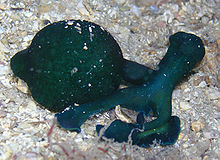
Young Knives are an English indie rock band from Ashby-de-la-Zouch, Leicestershire, and are currently based in Wantage, Oxfordshire. The group consists of brothers Henry Dartnall and Thomas Bonsu-Dartnall. Oliver Askew was drummer from 1998 until 2015.
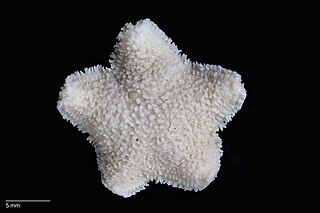
Patiriella is a genus of sea stars of the family Asterinidae. Many species formerly included in this genus have been transferred to other genera. They are commonly known as carpet sea stars.

Luigi Rolando was an Italian anatomist known for his pioneering research in brain localization of function.
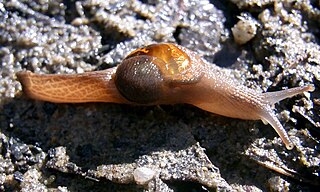
Helicarion is a genus of air-breathing land snails or semislugs, terrestrial pulmonate gastropod molluscs in the family Helicarionidae.
Attenborougharion rubicundus is a species of air-breathing semi-slug, terrestrial pulmonate gastropod molluscs in the family Helicarionidae.
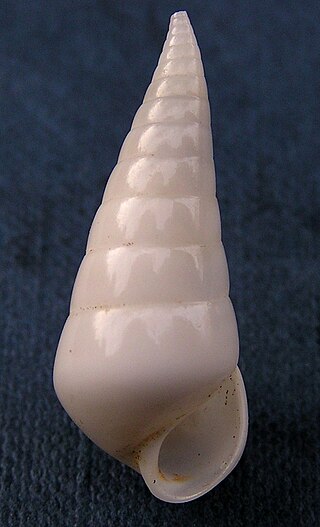
Eulimidae is a family of very small parasitic sea snails, marine gastropod mollusks in the superfamily Vanikoroidea.
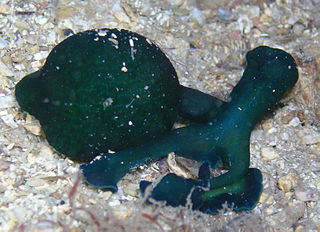
Bonellia viridis, the green spoonworm, is a marine worm noted for displaying exceptional sexual dimorphism and for the biocidal properties of a pigment in its skin.

Cryptasterina hystera is a species of starfish. It is found in a limited region of the coast of Australia and is very similar in appearance to Cryptasterina pentagona. The two appear to have diverged from a common ancestral line a few thousand years ago.

Notholca is a genus of rotifers known from Holocene lake deposits as well as the present day.
Bonellia is a genus of medium-sized sea snails, marine gastropod mollusks in the family Eulimidae.
Aoniraptor is a genus of possibly megaraptoran or bahariasaurid theropod dinosaur from the Late Cretaceous of Argentina.
Bonellia is the scientific name of several genera of organisms and may refer to:

Niebla is a genus of abelisaurid theropod dinosaur from the Late Cretaceous Period (Campanian-Maastrichtian) of Río Negro province, Argentina. The genus contains a single species, Niebla antiqua, and is known from a partial, non-articulated skeleton. The holotype, found in the Allen Formation, represents an adult individual about nine years old in minimum age.
Menucocelsior is a genus of medium-sized titanosaurian sauropod dinosaur from the Late Cretaceous Allen Formation of Argentina. The type and only species is Menucocelsior arriagadai.
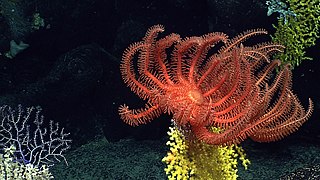
Novodinia is a genus of echinoderms belonging to the family Brisingidae.

Parvulastra is a genus of starfish belonging to the family Asterinidae. The species of this genus are found in Southern Hemisphere.

Maip is a genus of large megaraptorid theropod dinosaur from the Late Cretaceous (Maastrichtian) Chorrillo Formation of Santa Cruz, Argentina. The genus contains a single species, M. macrothorax, known from an incomplete, disarticulated skeleton. Maip may represent the largest megaraptorid known from South America, and possibly the world.

Cryptasterina is a genus of starfish belonging to the family Asterinidae. They occur in the Indian and Western Pacific Oceans in the littoral and shallow sublittoral zone.

Yatenavis is an extinct genus of enantiornithine bird from the Late Cretaceous Chorrillo Formation of Santa Cruz Province, Argentina. The genus contains a single species, Y. ieujensis, known from a partial humerus.
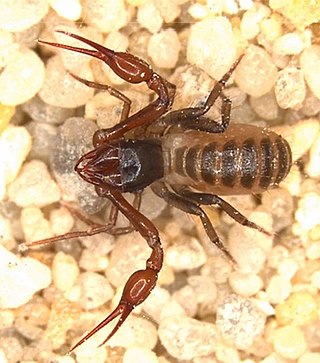
Pseudotyrannochthonius is a genus of pseudoscorpions in the family Pseudotyrannochthoniidae. It was described in 1930 by Austrian arachnologist Max Beier.
